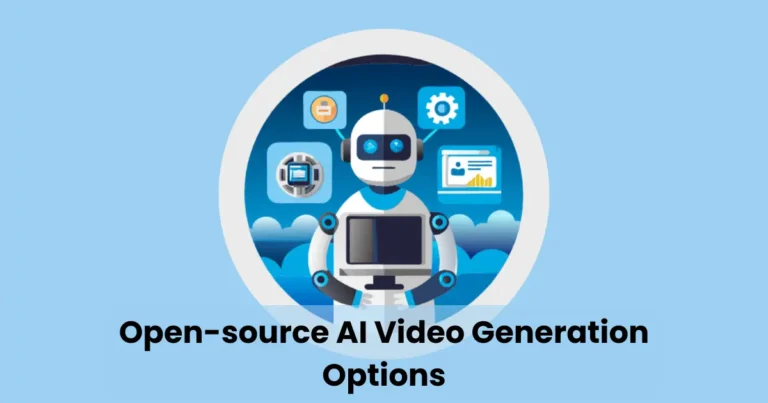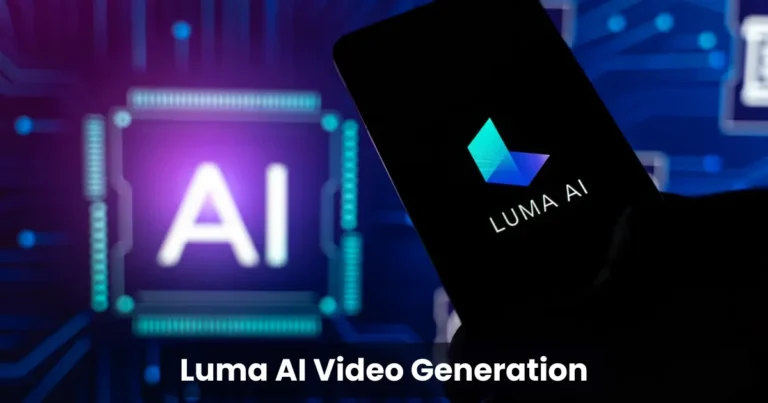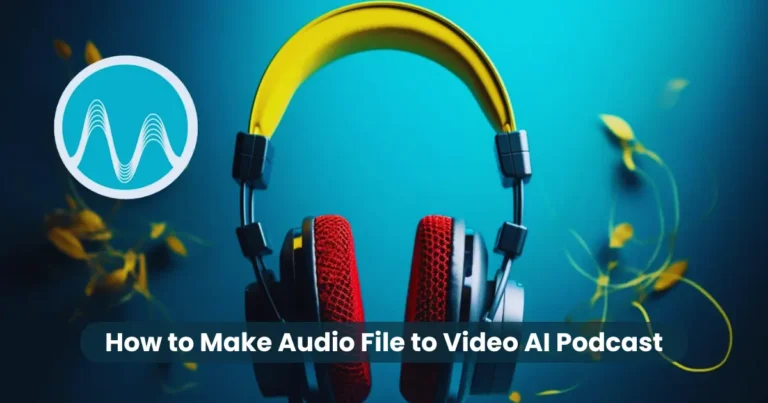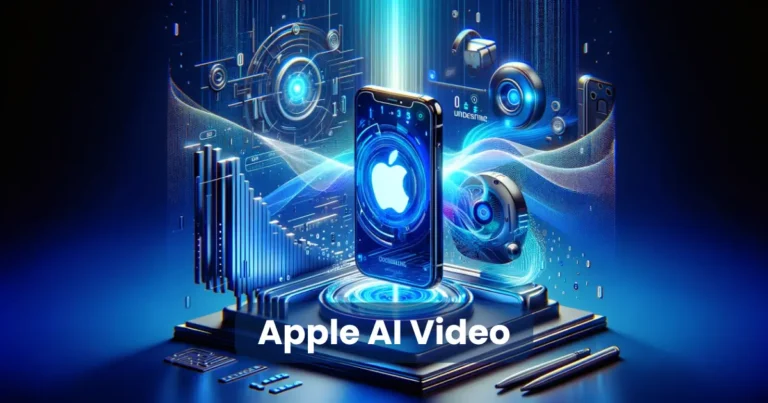AI Translation Video: Breaking Language Barriers with AI
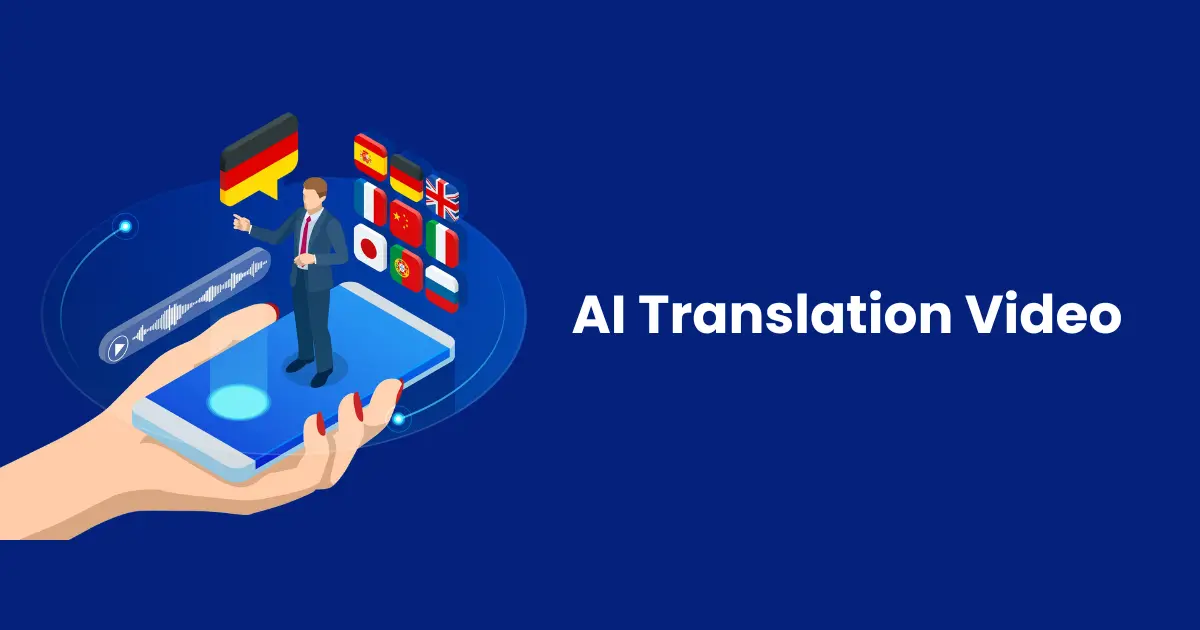
Contents
- 1 What is AI Translation Video?
- 2 How AI Translation Video Works
- 3 Benefits of AI Translation Video
- 4 Best AI Translation Video Tools
- 5 How to Create an AI Translation Video
- 5.1 Step 1: Choose the Right AI Translation Tool
- 5.2 Step 2: Upload Your Video
- 5.3 Step 3: Generate and Edit Transcription
- 5.4 Step 4: Translate the Video Content
- 5.5 Step 5: Add AI Voiceovers or Subtitles
- 5.6 Step 6: Sync and Adjust Translated Audio or Subtitles
- 5.7 Step 7: Export and Download the AI Translated Video
- 5.8 Step 8: Publish and Share Your AI Translated Video
- 6 AI Translation Video for Businesses
- 6.1 1. Expanding Global Reach
- 6.2 2. Enhancing Customer Support
- 6.3 3. Increasing Employee Training Efficiency
- 6.4 4. Boosting SEO and Engagement
- 6.5 5. Reducing Translation Costs
- 6.6 6. Strengthening Brand Presence
- 6.7 7. Improving Social Media and Advertising Performance
- 6.8 Industries That Benefit from AI Translation Video
- 7 The Future of AI Translation Video
- 7.1 1. Real-Time AI Video Translation
- 7.2 2. AI-Powered Lip Syncing for Natural Speech
- 7.3 3. Emotionally Intelligent AI Voices
- 7.4 4. Personalized AI Voice Cloning
- 7.5 5. AI Translation Video for AR & VR
- 7.6 6. Enhanced AI Contextual Understanding
- 7.7 7. Expansion of AI Translation in Business & Education
- 7.8 8. Seamless Integration with Video Editing Software
- 7.9 Conclusion
In today’s fast-paced digital world, AI translation video technology is revolutionizing global communication. Businesses, content creators, and educators use AI-powered translation tools to convert video content into multiple languages efficiently. With the increasing demand for multilingual content, AI translation video solutions offer a cost-effective and time-saving alternative to manual translation. This technology enhances accessibility, expands audience reach, and helps brands connect with international markets seamlessly. In this article, we will explore how AI translation video works, its key benefits, and the best tools available to streamline the translation process.
What is AI Translation Video?
AI video refers to the process of using artificial intelligence to translate video content from one language to another. This technology utilizes advanced machine learning, natural language processing (NLP), and speech recognition to generate accurate subtitles, voiceovers, or even lip-synced translations in multiple languages.
Unlike traditional translation methods, AI translation video tools automate the entire process, making it faster and more cost-effective. These tools analyze spoken language, convert it into text, translate the text into the target language, and then generate natural-sounding speech or subtitles. As a result, businesses, educators, and content creators can easily make their videos accessible to a global audience without hiring professional translators.
How AI Translation Video Works
AI translation video technology follows a structured process that integrates machine learning, natural language processing (NLP), and speech synthesis. This automation allows for quick and accurate translation of video content into multiple languages.

1. Speech Recognition
The AI tool first transcribes the spoken words in the video into text. This step uses Automatic Speech Recognition (ASR) technology to accurately convert audio into written form, even distinguishing different speakers.
2. Machine Translation
Once the transcription is complete, AI-powered machine translation tools, such as Google Translate or DeepL, translate the text into the desired language. Advanced AI models ensure that the translated text maintains its original meaning and context.
3. Voice Synthesis and Dubbing
After translation, the AI system generates voiceovers using Text-to-Speech (TTS) technology. Some advanced tools even offer voice cloning and lip-syncing features, making the translated speech sound natural and synchronized with the speaker’s lip movements.
4. Subtitle Generation
For videos requiring subtitles, AI tools automatically generate translated captions. These subtitles are synchronized with the video to ensure accurate timing and readability.
5. Video Editing and Enhancement
Finally, users can review and refine the translated video. Some AI tools provide editing options to adjust the voice tone, correct errors, or improve subtitle placement before finalizing the video.
By automating these steps, AI translation video tools make multilingual content creation faster, more affordable, and highly scalable.
Benefits of AI Translation Video
AI translation video technology offers numerous advantages, making it an essential tool for businesses, content creators, and educators. By automating the translation process, AI eliminates the need for manual efforts while ensuring accuracy and efficien.

1. Breaking Language Barriers
AI video allows content to be accessible in multiple languages, enabling businesses to reach a global audience. Whether it’s marketing videos, educational content, or corporate training, AI-powered translation ensures that language is no longer a limitation.
2. Cost-Effectiveness
Traditional video translation services, such as human translators and voice actors, can be expensive. AI tools significantly reduce costs by automating transcription, translation, and dubbing, making multilingual content creation more affordable.
3. Faster Turnaround Time
AI-powered translation tools process videos much faster than manual translation. With automated speech recognition, real-time translation, and AI-generated voiceovers, businesses can localize their content within minutes instead of days or weeks.
4. Increased Engagement and Accessibility
Multilingual videos enhance user engagement by catering to a diverse audience. Additionally, AI-generated subtitles improve accessibility for individuals with hearing impairments, ensuring inclusivity across different viewer demographics.
5. High Accuracy and Context Retention
Advanced AI models ensure that translations maintain the original meaning, tone, and cultural nuances of the content. Continuous improvements in AI-powered natural language processing (NLP) enhance accuracy, reducing errors in automated translations.
6. Scalability for Large-Scale Content
For businesses producing large volumes of video content, AI translation tools offer scalability. Whether it’s translating hundreds of training videos or localizing a YouTube channel, AI automates the process without compromising quality.
7. Competitive Advantage in Global Markets
Companies leveraging AI translation video gain a competitive edge by expanding into international markets effortlessly. Localized video content builds brand trust, improves customer experience, and enhances global outreach.
By integrating translation video technology, businesses and creators can streamline multilingual content production, improve efficiency, and engage a broader audience.
Best AI Translation Video Tools
These AI tools have revolutionized the way businesses and content creators localize their videos for a global audience. These tools automate transcription, translation, and voice synthesis, ensuring high-quality multilingual content. Below are some of the best translation video tools available today:

1. DeepL
Best for: High-accuracy text translation
Features:
- AI-powered machine translation with deep learning
- Supports multiple languages with context-aware translations
- Easy integration with other tools for automated workflows
2. Google Translate
Best for: Quick and free AI translation
Features:
- Supports over 100 languages
- Real-time speech-to-text translation
- AI-generated voiceovers and subtitles
3. Papercup
Best for: AI voice dubbing and lip-syncing
Features:
- AI-generated voiceovers in multiple languages
- Emotionally expressive AI voices
- Used by media companies for automated dubbing
4. Synthesia
Best for: AI-powered video creation with avatars
Features:
- AI-generated human-like voiceovers
- 140+ languages supported
- Custom AI avatars for professional-looking videos
5. Sonix
Best for: AI-powered transcription and subtitles
Features:
- Accurate speech-to-text transcription
- Automatic subtitle generation in multiple languages
- Cloud-based editing and collaboration tools
6. Kapwing
Best for: Online video editing with AI subtitles
Features:
- Automatic AI subtitle translation
- Real-time text-to-speech conversion
- User-friendly video editing interface
7. VEED.io
Best for: AI translation with easy video editing
Features:
- AI-powered subtitle translation
- Supports voiceovers in different languages
- Simple drag-and-drop video editing tools
8. Rask AI
Best for: AI-powered voice cloning and localization
Features:
- AI voice cloning for multilingual dubbing
- Automatic video translation and voice sync
- Ideal for content creators and businesses
Choosing the Right AI Translation Video Tool
Selecting the right AI translation video tool depends on your specific needs. If you need high-accuracy translations, DeepL is a great option. For AI voice dubbing, Papercup and Rask AI are ideal. Meanwhile, platforms like Synthesia and VEED.io offer complete video translation and editing solutions.
How to Create an AI Translation Video
Creating an AI translation video is a straightforward process with the right tools. By following a structured approach, you can effectively translate your video content into multiple languages while maintaining quality and accuracy.

Step 1: Choose the Right AI Translation Tool
Selecting a reliable AI-powered translation tool is the first step. Popular options include DeepL, Papercup, Synthesia, VEED.io, and Rask AI. Consider factors like:
- Language support
- Voiceover or subtitle capabilities
- AI dubbing and lip-syncing features
Step 2: Upload Your Video
Once you have chosen the AI tool, upload your video file to the platform. Most tools support common formats such as MP4, MOV, and AVI.
Step 3: Generate and Edit Transcription
AI-powered speech recognition transcribes the spoken words into text. Before proceeding with translation, review and edit the transcription to ensure accuracy.
Step 4: Translate the Video Content
Use AI machine translation to convert the transcribed text into the target language. Some platforms, like DeepL and Google Translate, provide context-aware translations to improve accuracy.
Step 5: Add AI Voiceovers or Subtitles
Now, decide whether you want:
- AI Voiceover/Dubbing – The tool will generate a natural-sounding AI voice in the translated language. Platforms like Papercup and Rask AI provide realistic voice cloning.
- AI Subtitles – AI-generated subtitles will be overlaid on the video. Tools like VEED.io and Kapwing offer auto-subtitle generation.
Step 6: Sync and Adjust Translated Audio or Subtitles
To ensure a smooth viewing experience:
- Adjust subtitle timing for readability.
- Synchronize AI-generated voiceovers with the speaker’s lip movements.
- Edit and refine the translated text for better clarity.
Step 7: Export and Download the AI Translated Video
After finalizing the translation and edits, export the video in your preferred resolution and format. Most AI translation tools offer MP4, MOV, or WebM export options.
Now that your video is translated, publish it on platforms like YouTube, TikTok, Instagram, or business websites to reach a global audience.
By following these steps, you can create an AI translation efficiently, making your content accessible to viewers worldwide while saving time and costs.
AI Translation Video for Businesses
Businesses are rapidly adopting AI translation video technology to expand their reach, improve communication, and enhance customer engagement. Whether it’s marketing, customer support, or training, AI-powered translation tools help companies create multilingual content efficiently. Here’s how businesses can benefit from AI translation video:

1. Expanding Global Reach
Companies can break language barriers by translating promotional videos, product demos, and advertisements into multiple languages. AI translation video tools allow brands to connect with international customers effortlessly.
2. Enhancing Customer Support
AI-powered video helps businesses provide multilingual customer support through FAQs, tutorials, and troubleshooting guides. This improves customer satisfaction and reduces the need for large support teams.
3. Increasing Employee Training Efficiency
Global organizations can use AI video to train employees in different regions. Translating onboarding materials, compliance training, and instructional videos ensures consistency across international teams.
4. Boosting SEO and Engagement
Multilingual video content improves search engine rankings and increases engagement. AI-translated videos attract a diverse audience, leading to higher watch time, more shares, and better conversion rates.
5. Reducing Translation Costs
Hiring human translators and voice-over artists for multiple languages can be expensive. AI translation video tools significantly cut costs while maintaining high-quality translations for businesses.
6. Strengthening Brand Presence
By offering content in different languages, businesses build a strong global brand. AI-powered translation fosters inclusivity, making a company more accessible to diverse audiences.
7. Improving Social Media and Advertising Performance
Social media platforms favor multilingual content, leading to better engagement and ad performance. AI translation video helps brands localize ads for different regions, boosting conversions.
Industries That Benefit from AI Translation Video
- E-commerce: Product descriptions and ads for international customers
- Healthcare: Medical tutorials and patient education videos
- Education: Online courses and training materials
- Entertainment & Media: Movie subtitles and AI voice dubbing
- Corporate Training: Employee training and business presentations
AI translation video is transforming business communication by making content accessible to a global audience. Companies that invest in AI-powered translation gain a competitive edge, reduce costs, and maximize their reach across different markets.
The Future of AI Translation Video
As artificial intelligence continues to evolve, AI translation video technology is set to transform global communication in remarkable ways. With advancements in machine learning, voice synthesis, and real-time translation, the future of AI-powered video translation looks more promising than ever. Here are the key trends shaping the future of AI translation video:

1. Real-Time AI Video Translation
Future AI translation video tools will offer instant translation and dubbing in real-time, eliminating delays. Businesses, educators, and content creators will be able to stream multilingual videos live, allowing seamless global communication.
2. AI-Powered Lip Syncing for Natural Speech
Improved deep-learning models will enhance AI lip-syncing technology, making AI-generated voiceovers look more realistic. Viewers will experience near-perfect lip movements that match the translated audio, creating a more immersive experience.
3. Emotionally Intelligent AI Voices
Future AI voice synthesis will incorporate emotions, tone variations, and human-like inflections. AI translation tools will not only translate words but also retain the speaker’s original emotions, making the translation sound more natural.
4. Personalized AI Voice Cloning
With AI voice cloning, users will be able to replicate their own voice in multiple languages. This will revolutionize content creation, allowing individuals and businesses to maintain brand identity across different markets.
5. AI Translation Video for AR & VR
As augmented reality (AR) and virtual reality (VR) grow, AI translation tools will integrate with these technologies. Real-time language translation in VR meetings, AR shopping experiences, and online events will enhance multilingual interactions.
6. Enhanced AI Contextual Understanding
One of the current challenges in AI translation video is maintaining context and cultural nuances. Future AI models will become smarter at understanding context, ensuring more accurate and culturally sensitive translations.
7. Expansion of AI Translation in Business & Education
Companies and educational institutions will widely adopt AI-powered translation to make training videos, online courses, and corporate content available in multiple languages. AI translation video will play a major role in breaking educational and business communication barriers.
8. Seamless Integration with Video Editing Software
AI translation video tools will become fully integrated with popular video editing platforms like Adobe Premiere Pro, Final Cut Pro, and DaVinci Resolve. This will allow automatic translation, dubbing, and subtitle generation within editing software, making content localization easier than ever.
The future of AI translation video is filled with groundbreaking innovations. From real-time translation to AI-powered voice cloning, this technology will continue to revolutionize how we communicate across languages. As AI improves, businesses, educators, and content creators will be able to connect with a global audience effortlessly, making language barriers a thing of the past.
Conclusion
AI translation video technology is revolutionizing global communication by making video content accessible in multiple languages. Businesses, educators, and content creators can now expand their reach, engage diverse audiences, and reduce translation costs with AI-powered tools.
By automating transcription, translation, and voice synthesis, AI tools provide a faster, more efficient alternative to traditional translation methods. With advancements in real-time translation, AI voice cloning, and lip-syncing, the future of translation video looks even more promising. As AI continues to improve, businesses that adopt this technology will gain a competitive edge in international markets. Whether for marketing, customer support, education, or entertainment, AI translation video is shaping the future of multilingual content creation.

